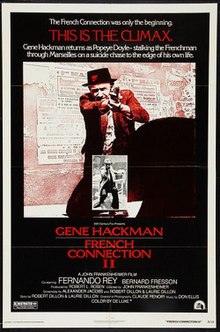
Eugene Allen Hackman is an American retired actor. In a career that spanned more than six decades, he received two Academy Awards, two BAFTA Awards, four Golden Globes, a Screen Actors Guild Award, and the Silver Bear. Hackman's two Academy Award wins included one for Best Actor for his role as Jimmy "Popeye" Doyle in William Friedkin's acclaimed thriller The French Connection (1971) and the other for Best Supporting Actor for his role as "Little" Bill Daggett in Clint Eastwood's Western film Unforgiven (1992). His other Oscar-nominated roles were in Bonnie and Clyde (1967), I Never Sang for My Father (1970), and Mississippi Burning (1988).
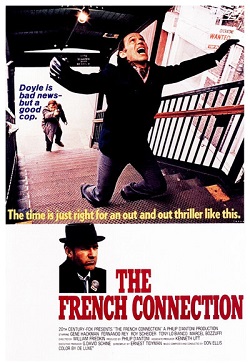
The French Connection is a 1971 American neo-noir action thriller film directed by William Friedkin and starring Gene Hackman, Roy Scheider and Fernando Rey. The screenplay, written by Ernest Tidyman, is based on Robin Moore's 1969 non-fiction book of the same name. It tells the story of fictional NYPD detectives Jimmy "Popeye" Doyle and Buddy "Cloudy" Russo, whose real-life counterparts were narcotics detectives Eddie Egan and Sonny Grosso, in pursuit of wealthy French heroin smuggler Alain Charnier.

Bad Boys is a 1995 American buddy cop action comedy film directed by Michael Bay in his feature directorial debut, produced by Don Simpson and Jerry Bruckheimer, and starring Martin Lawrence and Will Smith as two Miami narcotics detectives Marcus Burnett and Mike Lowrey. The film received mixed reviews from critics, but was commercially successful and spawned two sequels: Bad Boys II (2003), Bad Boys for Life (2020). A fourth film titled Bad Boys: Ride or Die is set for release in 2024.

Blue Streak is a 1999 American buddy cop action comedy film directed by Les Mayfield. Inspired by the 1965 film The Big Job, the film stars Martin Lawrence, Luke Wilson, Dave Chappelle, Peter Greene, Nicole Ari Parker and William Forsythe. Lawrence plays Miles, a jewel thief who tries to retrieve a diamond he left at a police station, whereupon he disguises himself as a detective and gets paired with a real policeman to investigate burglaries. The film was shot on location in California. The prime shooting spot was Sony Pictures Studios, which is located in Culver City, California.

Fernando Casado Arambillet, best known as Fernando Rey, was a Spanish film, theatre, and television actor, who worked in both Europe and the United States. A suave, international actor best known for his roles in the films of surrealist director Luis Buñuel and as the drug lord Alain Charnier in The French Connection (1971) and French Connection II (1975), he appeared in more than 150 films over half a century.

Pusher is a 1996 Danish crime thriller film co-written and directed by Nicolas Winding Refn, in his film debut. A commercial success considered to be influential in Danish film history, it marked Mads Mikkelsen's film debut.

P. J. Clarke's is a saloon, established 1884. It occupies a building located at 915 Third Avenue on the northeast corner of East 55th Street in Manhattan. It has a second location at 44 West 63rd Street on the southeast corner of Columbus Avenue.

The Gypsy Moths is a 1969 American drama film, based on the 1955 novel of the same name by James Drought and directed by John Frankenheimer. The film tells the story of three barnstorming skydivers and their effect on a Midwestern American town, focusing on the differences in values between the town folk and the hard-living skydivers.
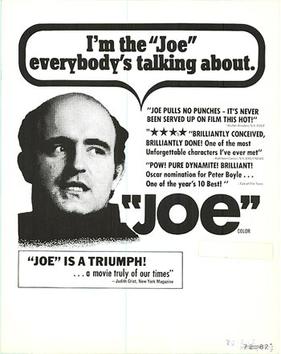
Joe is a 1970 American drama film written by Norman Wexler and directed by John G. Avildsen. It stars Peter Boyle, Dennis Patrick, and Susan Sarandon in her film debut.

The French Connection, also known as The French Connection: The World's Most Crucial Narcotics Investigation and The French Connection: A True Account of Cops, Narcotics, and International Conspiracy, is a nonfiction book by Robin Moore first published in 1969 about the notorious "French Connection" drug-trafficking scheme. It is followed by the 1975 book The Set Up. The book was adapted to film in 1971 as The French Connection, written by Ernest Tidyman and directed by William Friedkin, which was followed by the film sequel French Connection II in 1975, and the television film sequel Popeye Doyle in 1986.
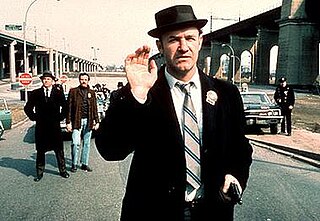
Detective Jimmy "Popeye" Doyle is a fictional character portrayed by actor Gene Hackman in the films The French Connection (1971) and its sequel, French Connection II (1975), and by Ed O'Neill in the 1986 television film Popeye Doyle. Hackman won the Academy Award for Best Actor for his performance in The French Connection. The character is based on a real-life New York City police detective, Eddie Egan, who also appeared in the film as Walt Simonson, Doyle's supervisor. Doyle, as played by Hackman in The French Connection, is ranked number 44 as a hero on the AFI's 100 Years...100 Heroes and Villains list.
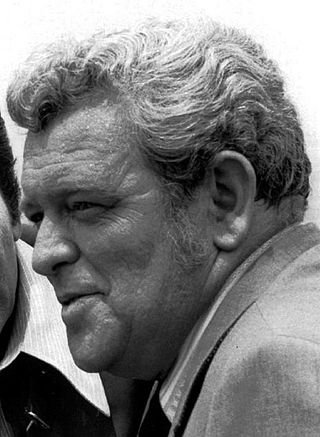
Edward R. Egan was an American actor and former police detective. He was the subject of the nonfiction book The French Connection and its 1971 film adaptation.
Salvatore Anthony Grosso, known as Sonny Grosso, was an American film producer, television producer, and NYPD detective, noted for his role in the case made famous in the book and film versions of the French Connection.
The French Connection was a scheme through which heroin was smuggled from Indochina through Turkey to France and then to the United States and Canada. The operation started in the 1930s, reached its peak in the 1960s, and was dismantled in the 1970s. It was responsible for providing the vast majority of the heroin used in the United States at the time. The operation was headed by Corsicans Antoine Guérini and Paul Carbone. It also involved Auguste Ricord, Paul Mondoloni and Salvatore Greco.
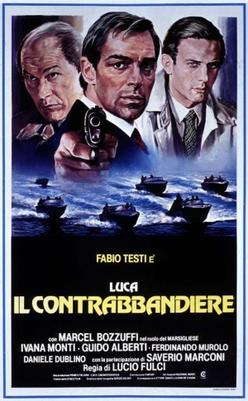
Contraband is a 1980 poliziotteschi film directed by Lucio Fulci.

Philippe Léotard was a French actor, poet and singer.
The Corsican mafia is a set of criminal groups originating from Corsica. The mafia is closely tied to both the French underworld and the Italian Mafia. The Corsican mafia is an influential organized crime structure operating in France, Russia, and many African and Latin American countries.

The Connection is a 2014 action crime thriller film directed by Cédric Jimenez and produced by Alain Goldman. The film was inspired by the events of the French Connection in the 1970s, starring Jean Dujardin as police magistrate Pierre Michel (juge) and Gilles Lellouche as Gaëtan "Tany" Zampa, a drug gang ringleader. The film premiered at the Toronto International Film Festival on 10 September 2014.
Popeye Doyle is an American 1986 television film starring Ed O'Neill as New York City police detective Jimmy "Popeye" Doyle. The film is a sequel to the feature films The French Connection (1971) and French Connection II (1975), in which Doyle had been played by Gene Hackman; Hackman had won the Academy Award for Best Actor for his performance in The French Connection. Popeye Doyle was originally intended as a pilot episode for a series called Popeye Doyle, but the series was not picked up.

Lex Luthor is a supervillain portrayed by American-actor Gene Hackman in the Warner Bros. Superman film series produced by Ilya and Alexander Salkind, and is an adaption of the original DC Comics character, Lex Luthor. Luthor's girlfriend, film-original character Eve Teschmacher, was later adapted to comic books and other media.
